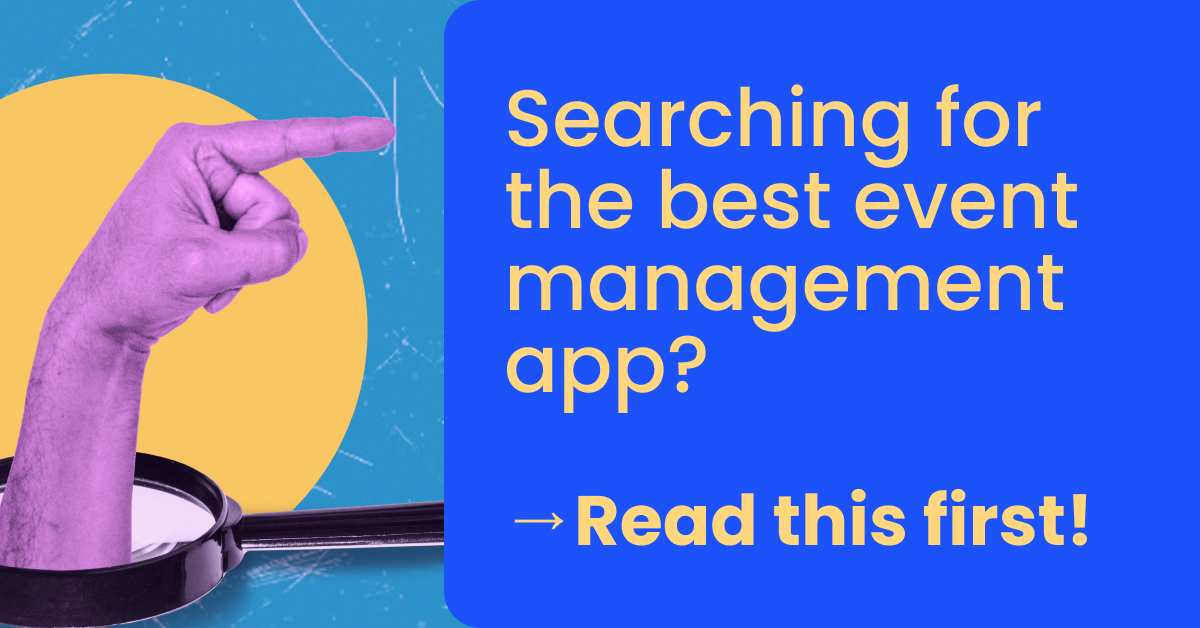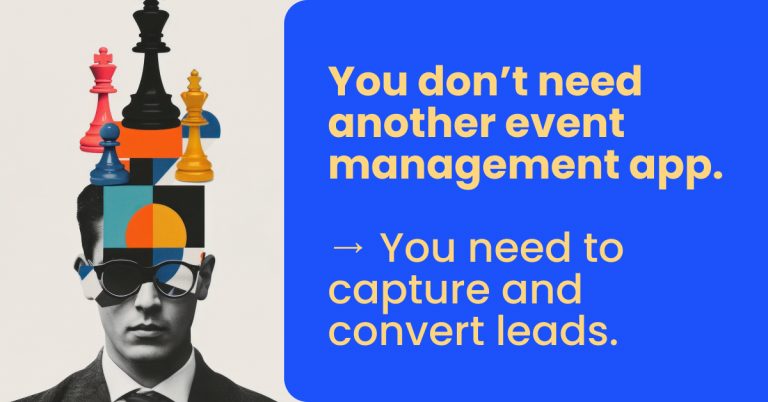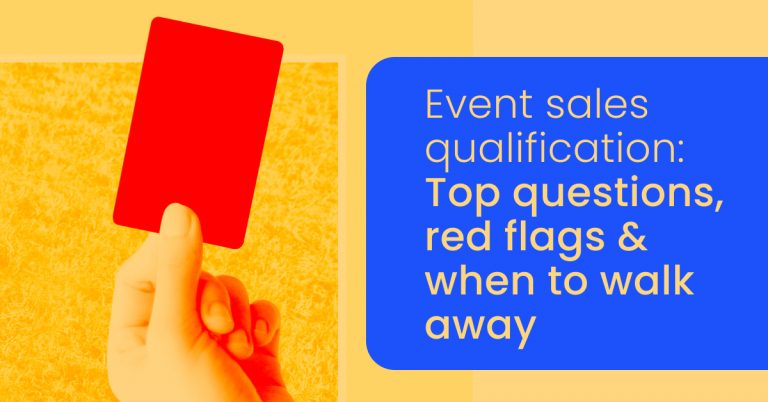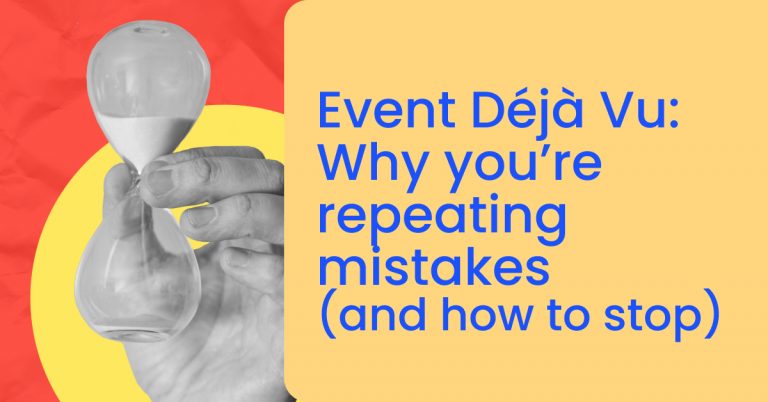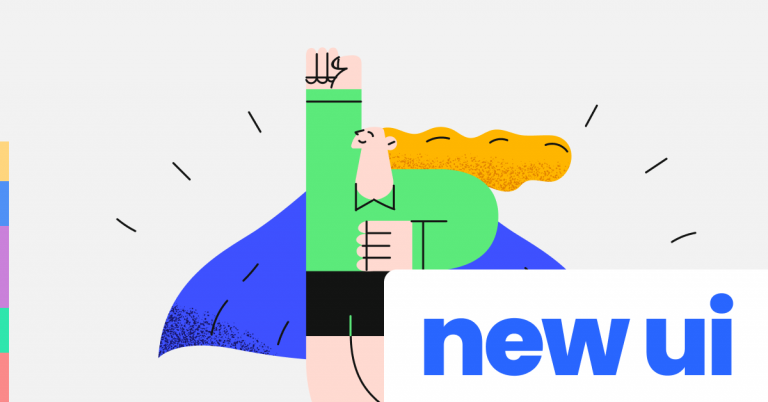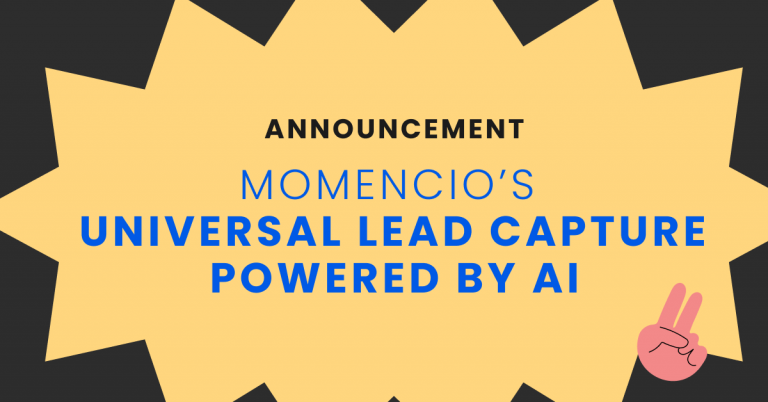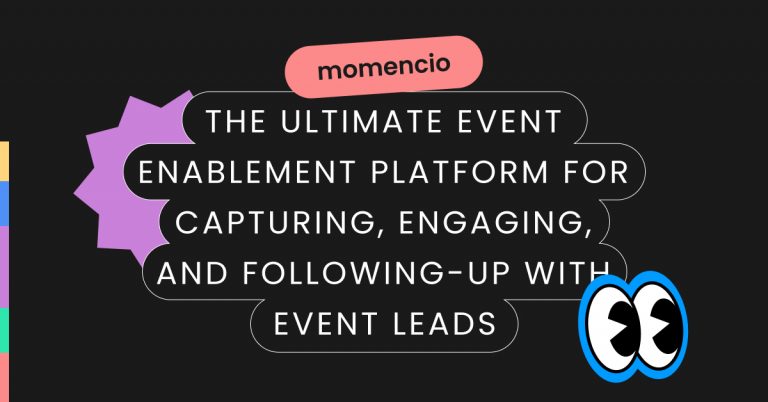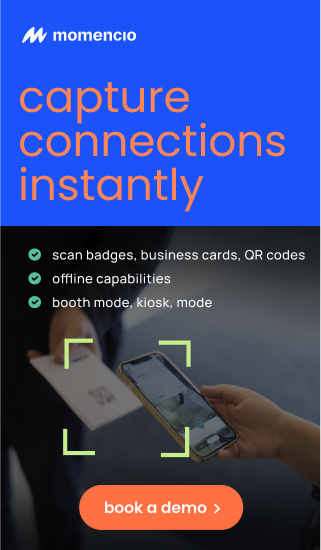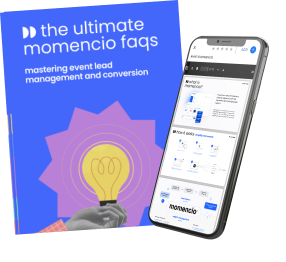Most teams looking for the best event management app aren’t really looking for an app. They’re looking for relief. Relief from the mess of tools that don’t talk to each other. Relief from the awkward scramble of leads lost between the booth and the CRM. Relief from the dead air that follows after the event is over and no one quite knows what to do with the pile of business cards and badge scans sitting in their inbox.
The search feels like it should be easy. Type “best event management app” into Google and you’ll find hundreds of options, all promising smooth check-ins, badge scans, data capture, and attendee tracking. On the surface, that sounds like exactly what you need. Clean. Tidy. Everything in one place.
But let’s be honest. It never really works that way. You start with one app. Then you realize it doesn’t handle post-event follow-up. So you bolt on another system for email automation. Then you notice it doesn’t talk to your CRM properly. So you add yet another layer for integration. And before you know it, your tech stack looks like a junk drawer full of half-used tools that barely function together.
Here’s the real kicker. Every time you add another app to cover a gap, you also add another crack for your leads to fall through.
And the cracks are where revenue leaks.
So, the question isn’t really about which app is best. It’s whether an app—on its own—can ever do enough. Whether it can move fast enough, connect deep enough, or help you see clearly enough to turn fleeting event conversations into actual sales.
That’s the question we’re going to unpack here. Not which shiny tool to download next, but whether you’re asking the right question in the first place.
Why the search for the best event management app is a trap
It’s an easy trap to fall into, because it feels like progress. You sit down with your team, maybe after another exhausting event, and someone says what everyone is thinking. “We need a better app for this.”
There’s a quiet nod around the table because it sounds like a solution. And in a way, it is. At least, it looks like one on the surface.
The search begins. You build a list of features. You compare reviews. You watch a few demos. Badge scanning? Check. Lead capture? Check. Easy interface? Check.
You feel like you’re making progress because the checklist is filling up fast.
But here’s the problem no checklist will show you: apps are built to do some things well, but very few apps are built to do everything that matters.
Most event management apps focus on the front of the funnel. They help you get people through the door, maybe even make registration feel smoother. They’ll collect names and details, maybe scan a few badges with decent accuracy. And then?
Then they stop. What happens next is your real problem.
Because once the app has done its job, you’re left holding a bag of disconnected data. No context. No journey. Just a static list of names and emails waiting for something to happen. And unless you’ve already built a whole ecosystem of tools around that app, nothing does.
This is where teams start to feel the friction. The excitement of using a new app wears off the moment you realise you’re back in the same hole you started in—piecing together spreadsheets, trying to work out who showed real interest and who just happened to wander past your booth looking for free coffee.
You start exporting and importing data. You start chasing support tickets when things don’t sync. You start spending more time fixing your tech than using it to build relationships.
And if you’ve ever stood at your booth at the end of the day, holding your scanner and wondering whether it even captured half the conversations you had, you know this frustration well.
Here’s the quiet truth that no app vendor will tell you: the app is not the answer. The app is just a part of the puzzle. But the puzzle itself is much bigger than one good-looking interface.
Chasing the best event management app keeps you looking at surface-level solutions when what you really need is depth. Not a shinier way to scan a badge, but a smarter way to understand the person behind the badge. Not just data capture, but data connection. Not just activity at the event, but action after the event.
That’s why the whole idea of the “best app” can be a trap. Because it narrows your thinking at the very moment you need to think wider.
What event professionals really need: beyond standalone apps
It’s not the moment someone scans a badge at your booth. It’s the moment two weeks later when you open a spreadsheet that feels like a stranger’s grocery list. Names you can’t quite place. Companies you think you spoke to, but you aren’t sure. Notes that say things like “good convo” or “interested in follow-up,” but they’re floating without context.
This is the quiet failure no app advertises.
Because the truth is, apps do their job in a vacuum. They record the raw data, but they don’t give you the context that turns data into decisions.
The scanner tells you “who”, but never tells you “why”
Most apps and lead scanners give you the same limited view.
Name. Company. Email. Maybe phone number. Maybe you get a time stamp from when they walked by your booth.
But they never tell you:
- What part of your conversation actually caught their attention
- Whether they’d already visited a competitor’s booth right before
- If they downloaded your collateral and actually read it
- Whether they showed hesitation when you discussed pricing
- If they responded well to your product demo or just nodded politely
This context doesn’t live inside the scanner. It lives in the space between the scanner and your team’s memory. And memory, as we know, fades fast.
By Monday morning, when you’re trying to piece it all back together, your scanner app has done all it can. It has captured the names, but it hasn’t captured the story.
No app captures what happens in the middle of a conversation
Here’s another thing no vendor will tell you.
Some of your best leads don’t always give you clean, scannable signals.
They’re the ones who hesitate before giving you their badge. They’re the ones who circle your booth twice before stopping. They ask a question that isn’t on your FAQ sheet. They respond to your answer with a raised eyebrow that says, “Maybe.”
None of this lives in an app. None of this gets exported in a neat .csv file.
Your best chance at capturing this nuance is real-time note-taking and a system that immediately attaches those notes to the lead profile. Not an afterthought, not a post-event scramble, but part of the capture flow itself.
The gap isn’t the app — it’s what happens after
Even if your app catches perfect lead data (which, let’s be honest, it rarely does), you still face the bigger problem: what happens next.
Because the longer you wait to act on those leads, the less they remember you.
And if you’re waiting for exports, uploads, CRM syncing, or your sales team to catch up, you’ve already lost critical time.
What event professionals need isn’t another scanner with a slicker interface.
They need a system that works with them, not after them.
A system that:
- Records the human moments during the conversation, not just the badge scan
- Syncs immediately with your CRM so nothing gets lost in translation
- Triggers fast, contextual follow-up while interest is still alive
- Helps you prioritise leads based on their actual engagement, not just badge data
This is about respect — for the work you do at the event, and the opportunities those moments create. Every lead is hard-earned. It deserves more than a shallow scan and a delayed export.
This is the reality for event professionals today. And it’s why thinking beyond apps isn’t a luxury. It’s survival.
The power of integration: CRM, marketing automation, and data insights
Most teams don’t realize it, but the real gap in their event process isn’t during the event. It’s in the hours and days that follow.
This is the moment when leads are either set on a clear path forward or left to go cold. It’s also the moment when many event tools quietly step back, leaving you to figure out the next move on your own.
When tools don’t talk, your leads go silent
You might have the best scanner on the show floor. But if the moment you pack up, that data just sits there waiting for someone to manually upload it into your CRM, you’ve already lost time.
And time matters here more than most people think.
Because your best leads — the ones you had real conversations with, the ones who showed curiosity but needed a bit more time — they’re still deciding. They’re still open to influence. But they won’t stay open for long.
If your tools don’t talk to each other, your follow-up is delayed. And delayed follow-up feels like disinterest.
This is why integration matters. Not as a technical feature, but as a practical way to respect the window of opportunity you worked hard to create at the event.
Integration isn’t a feature. It’s a flow.
When your lead capture tool integrates directly with your CRM and your marketing automation, a few things happen that are invisible but vital:
- Lead data flows instantly into your pipeline without manual uploads
- Notes and context from the conversation are preserved, not forgotten
- Follow-up emails can be personalised and triggered automatically
- Sales teams don’t need to guess who to prioritise — they can see who engaged, when, and how
This is where momencio earns its place in the process. Quietly, without fuss.
Because it doesn’t treat integration as an afterthought. It’s not just about exporting data after the event is over. With momencio, the lead capture flows directly into your CRM in real time, while the memory of the conversation is still fresh in your mind — and in the mind of your prospect.
It also keeps your notes attached to the lead, not floating in a separate document or app. So when your sales team picks up the thread, they aren’t starting cold. They’re picking up a conversation, not a contact record.
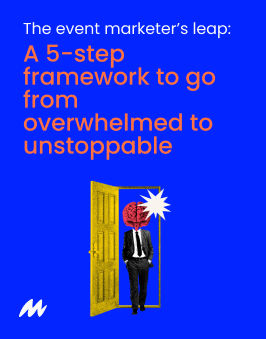
Data isn’t just numbers — it’s navigation
Most event teams treat data like a report card they’ll check later. Something to review at the end of the quarter.
But data at its best is a compass, not a scorecard. It tells you where to go next, while you still have time to get there.
With integrated systems, you’re not just collecting numbers to make a report. You’re actively navigating your next move:
- Spotting patterns in engagement, not just collecting totals
- Understanding which booth visits led to deeper content downloads
- Seeing in real time who clicked on your follow-up emails
- Recognizing which leads are moving, and which are stalling
And because momencio captures this data in flow — not as a delayed report, but as a live feed — you’re always in motion, never waiting for someone to process files and get back to you.
This is how small cracks in your process get sealed. Not with more manual effort, but with systems that remove the need for it in the first place.
Because the moment you stop asking your team to be the glue between your tools, you free them up to do the work that actually moves the needle: building relationships, closing deals, and growing your business.
Unlocking post-event ROI: from leads to loyal customers
Here’s something you already know, but probably feel more than you say out loud.
Most leads collected at events never become customers. Not because they weren’t interested. Not because your team didn’t follow up. But because the system between the moment of interest and the moment of action is broken.
And that system is almost always post-event.
The event is the spark, but follow-up is the fire
At the event, energy is high. Conversations flow. Curiosity is natural. People ask questions they might not ask over email. There’s a human connection that no automation can fully replicate.
But once the booths come down and the lights go out, something dangerous happens.
Your hot leads cool off fast.
They go back to their overloaded inboxes, their unfinished projects, their internal meetings. Your conversation, no matter how engaging it felt in the moment, starts to slip down their priority list.
The gap between interest and action widens every hour you wait to follow up.
And here’s where most event workflows falter. The lead data lives in one place, the CRM in another, the email tool in yet another. By the time everything is stitched together, the moment is gone.
Why timing is everything (and tools rarely respect it)
Let’s be honest about this: no sales rep wants to waste their time chasing dead leads. And no marketer wants to spam prospects with generic emails that feel like afterthoughts.
What they want is precision. They want to know:
- Who actually engaged at the event, beyond the scan
- What those people cared about in the conversation
- How fast they can follow up before interest fades
- What content or offer is most likely to land
This is why systems that wait for post-event uploads and manual tagging don’t work. The delay kills the momentum.
momencio helps close this gap in a way that feels almost invisible. As you capture leads at the booth, momencio doesn’t just store names — it records context. It connects that context directly to your follow-up tools. So the moment your prospect steps away from your booth, your system is already working for you.
It might send them a follow-up email tailored to the exact product they showed interest in. Or it might nudge your sales team with a signal that this is a warm lead worth prioritizing in the next call block.
There’s no lag. No waiting for files to upload, or notes to be transcribed later. The bridge between the spark and the fire is already built.
Turning scattered leads into a single, clear path
What you really want isn’t more data. It’s clarity.
You want to look at your post-event dashboard and see a path forward:
- Here’s your list of warm leads, ready for immediate follow-up
- Here’s who engaged with your content after the event
- Here’s the activity trail that shows buying signals
- Here’s where to focus your team’s energy this week
With momencio, this doesn’t require extra steps. It’s not an add-on. It’s the flow of the system itself.
Because the real goal isn’t to collect more leads — it’s to convert more of the leads you already have.
And that only happens when your follow-up is as sharp as your first impression.
How to future-proof your event tech stack
What you have today |
What you actually need for tomorrow |
Why it matters |
| A badge scanner that captures names and email addresses | A capture tool that also records conversation context, buying signals, and next-step actions in real time | So your sales team doesn’t have to rely on memory or guesswork to follow up |
| Manual data uploads after the event | Seamless, live data flow from booth to CRM to marketing tools | To avoid delays that let interest fade before follow-up happens |
| Separate tools for lead capture, CRM, email, and analytics | A unified system that connects all steps of the journey automatically | To reduce the cracks where good leads fall through |
| Generic, batch follow-up emails a week after the event | Instant, personalized follow-up based on what the lead engaged with at the booth | To show leads you were actually paying attention to their needs |
| End-of-month reports on event performance | Live dashboards showing lead engagement, follow-up success, and conversion readiness | So you can adjust your strategy while it’s still relevant, not after it’s too late |
| Over-reliance on memory and team notes to capture lead insights | Automated notes and smart tagging during the live conversation | So you preserve details that would otherwise be lost to time |
| Separate systems for event marketing and sales pipelines | A connected flow that turns event leads into sales-ready prospects without manual handoff | To keep momentum alive from first hello to closed deal |
momencio was built to solve this exact puzzle. Not by adding another tool to your stack, but by removing the need for half the tools you currently juggle. It captures the nuance of live conversations, flows data straight into your CRM, and automates personalised follow-up — not days later, but while your prospect still remembers your name.
Conclusion
There’s a moment of quiet honesty that comes after every event. When the noise fades and the booth comes down, you look at your leads and you ask yourself one question.
Was it worth it?
Not just the spend. Not just the number of scans. But the effort. The hours spent preparing. The conversations you had. The hopes you pinned on turning this event into something more than a busy few days.
And that’s where it becomes clear. The answer was never going to come from a better app. It was always going to come from a better system.
Apps are tools. Tools can be useful. But no tool, no matter how smart, can replace the thinking behind it.
You need a strategy that starts before the event and stays alive long after it ends. One that treats each conversation as the beginning of something, not a moment to check off a list.
That means less time stacking apps, and more time connecting dots. Less time fixing broken workflows, and more time following up with leads while they’re still interested. Less chasing technology for technology’s sake, and more building a system that works because it’s built for the way you work.
Tools like momencio quietly enable this. Not by adding complexity, but by removing it. By letting your team focus on people, not platforms. By turning events from isolated efforts into part of a living, breathing sales process.
So, if you take one thing away from this, let it be this: stop searching for the best event management app. Start building a strategy that turns events into outcomes.
Because at the end of the day, the best tool is the one you barely notice — because it’s busy doing the work for you.
Interesting facts from research
- Over 70% of event leads are never followed up properly due to poor system integration and data handling. It’s not a lack of effort — it’s a breakdown in flow.
- A single day’s delay in post-event follow-up can lower your chance of conversion by as much as 25%. Timing isn’t just important, it’s decisive.
- Manual data entry errors account for nearly 40% of lost event leads. Simple mistakes, like a mistyped email or misplaced note, cost more than most teams realise.
FAQs
- What’s the biggest risk of using a standalone event management app?
- The biggest risk is what happens after the event. Standalone apps often capture basic attendee details but fail to carry the conversation forward. Without direct integration into your CRM and follow-up systems, you lose momentum at the exact moment when it matters most. Leads go cold, details get lost, and the energy you built on the event floor fades before you can act on it.
- Can I fix the gaps in my event workflow just by adding more tools?
- You can try, but what usually happens is you just build a more complicated setup. Every new tool needs to be connected, managed, and maintained. The more tools you add, the more cracks you create for leads to fall through. The better solution is a single, connected platform that does the work of many tools without the heavy lifting on your part.
- How fast should follow-up happen after an event?
- Faster than you think. Within hours, not days. Ideally, while the prospect still remembers the conversation they had with you. Systems like momencio make this possible by syncing data in real time and triggering personalised follow-up automatically, so you don’t have to scramble after the event ends.
- Is integration with my CRM really that important?
- It’s essential. Without it, you’re stuck moving data manually, which slows down your response time and increases the risk of errors. A proper integration means your leads flow straight into your sales pipeline, complete with notes and context, so your team can take action immediately without hunting for information.
- Why do most event follow-ups feel generic and ineffective?
- Because they usually are. When you rely on static lists and batch emails, you miss the personal connection that sparked interest in the first place. A system that captures not just the contact details but the context of the conversation allows you to follow up with relevance — and relevance is what keeps the door open.
